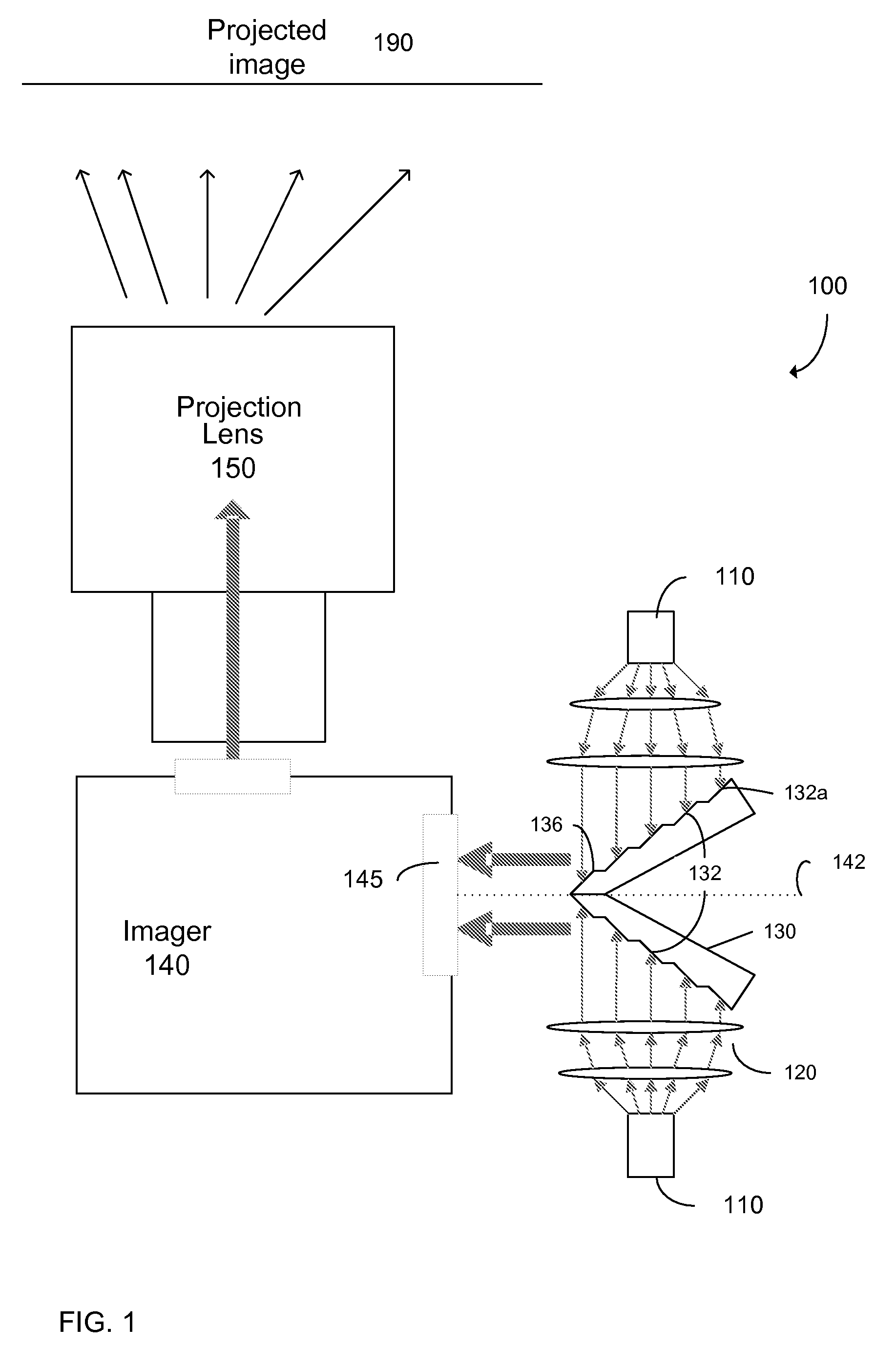High intensity image projector using sectional mirror
a projector and sectional mirror technology, applied in the field of image projectors, can solve the problems of inefficient light from multiple lamps, and achieve the effects of high brightness, low power consumption, and increased light intensity
- Summary
- Abstract
- Description
- Claims
- Application Information
AI Technical Summary
Benefits of technology
Problems solved by technology
Method used
Image
Examples
Embodiment Construction
[0023]Embodiments of the present invention provide image projectors with increased light intensity (brightness) relative to known models using multiple light sources. To increase brightness, embodiments use mirrors to respectively compress the light from two light sources into a single pupil (e.g. an aperture) of an imaging device.
[0024]In one embodiment, the light from each light source creates a node intensity light pattern, which is focused on a respective stepped mirror. In one aspect, the light received at a stepped mirror has the same f-number as an entrance pupil of an imager. Each stepped mirror can compress its received light to 50% of the entrance pupil. The light reflected from the stepped mirror will transmit into the optical system and focused on the imager.
[0025]FIG. 1 is a schematic diagram of an image projector 100 according to an embodiment of the present invention. Light from sources 110 is used to create an image, which is then displayed as projected image 190. He...
PUM
 Login to View More
Login to View More Abstract
Description
Claims
Application Information
 Login to View More
Login to View More - R&D
- Intellectual Property
- Life Sciences
- Materials
- Tech Scout
- Unparalleled Data Quality
- Higher Quality Content
- 60% Fewer Hallucinations
Browse by: Latest US Patents, China's latest patents, Technical Efficacy Thesaurus, Application Domain, Technology Topic, Popular Technical Reports.
© 2025 PatSnap. All rights reserved.Legal|Privacy policy|Modern Slavery Act Transparency Statement|Sitemap|About US| Contact US: help@patsnap.com



